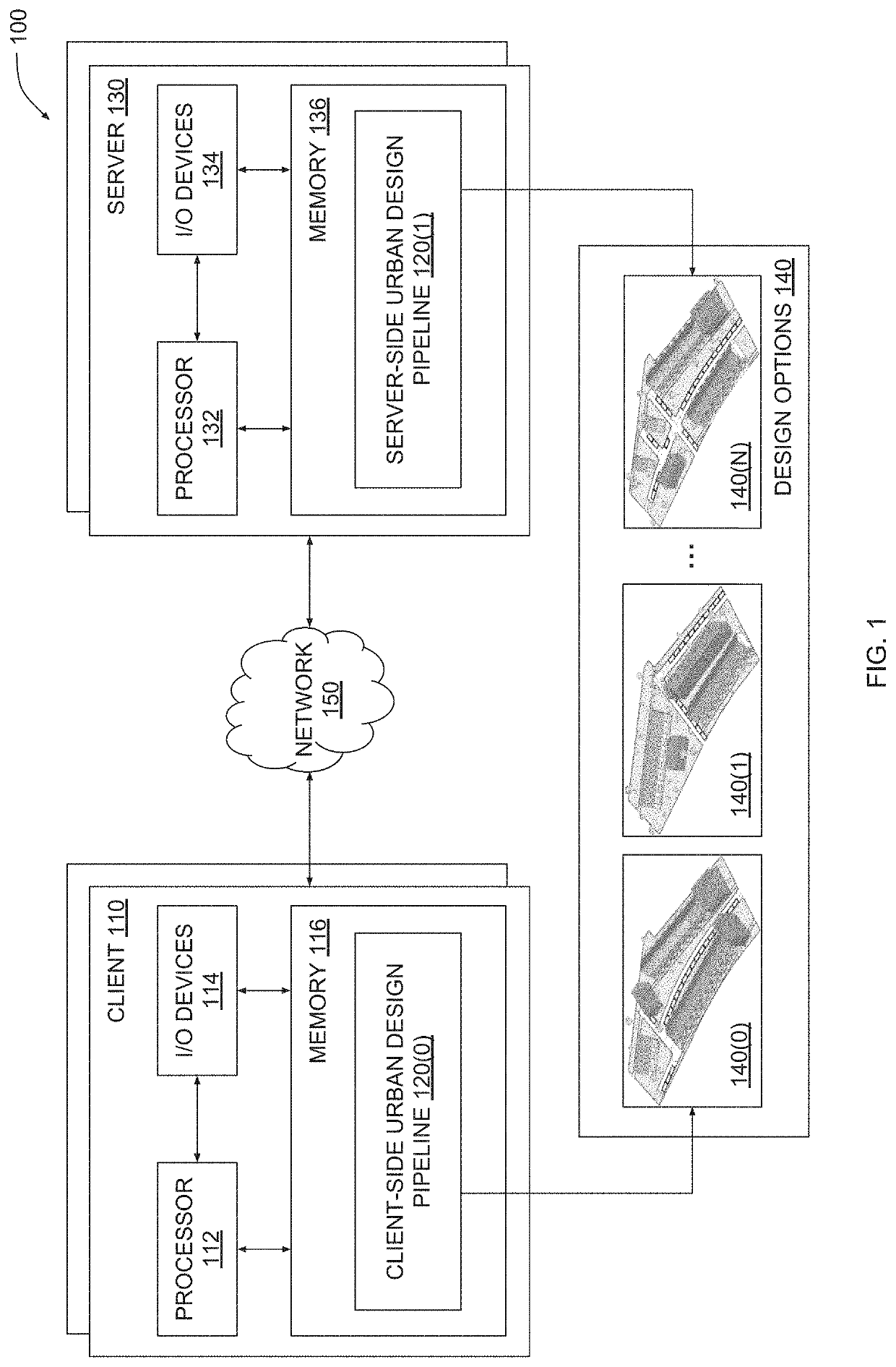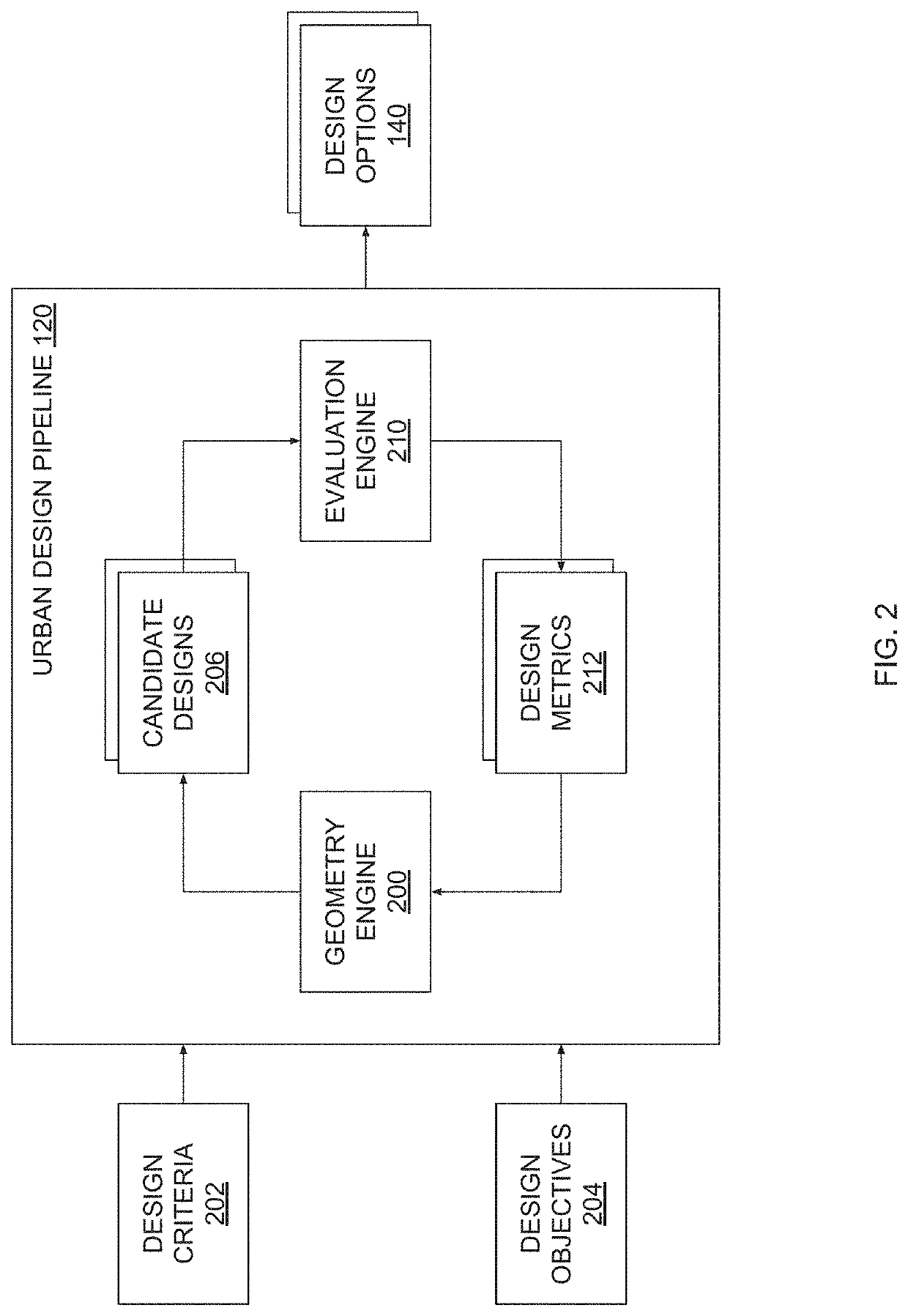Generative design pipeline for urban and neighborhood planning
a technology of generative design and urban planning, applied in the field of computer-aided design technology, can solve the problems of designers sometimes forgetting to consider certain design criteria or designs, designers cannot deterministically quantify, and designers can not meet the design criteria very well or adequately
- Summary
- Abstract
- Description
- Claims
- Application Information
AI Technical Summary
Benefits of technology
Problems solved by technology
Method used
Image
Examples
Embodiment Construction
[0002]Embodiments of the present invention relate generally to computer-aided design technology and, more specifically, to a generative design pipeline for urban and neighborhood planning.
Description of the Related Art
[0003]In a typical urban design project, a designer generates a design for developing a property. For example, the designer could plan the development and construction of a number of houses to be built within a housing subdivision. Urban design projects usually are subject to numerous design criteria (including both design constraints and design requirements) as well as numerous design objectives. For example, a design constraint could be that construction for a given urban design project should not occur outside of a specific property boundary. A design requirement could be that the given urban design project should include at least a minimum number of apartment units. A design objective could be that the given urban design project should maximize population density.
[...
PUM
 Login to View More
Login to View More Abstract
Description
Claims
Application Information
 Login to View More
Login to View More - R&D
- Intellectual Property
- Life Sciences
- Materials
- Tech Scout
- Unparalleled Data Quality
- Higher Quality Content
- 60% Fewer Hallucinations
Browse by: Latest US Patents, China's latest patents, Technical Efficacy Thesaurus, Application Domain, Technology Topic, Popular Technical Reports.
© 2025 PatSnap. All rights reserved.Legal|Privacy policy|Modern Slavery Act Transparency Statement|Sitemap|About US| Contact US: help@patsnap.com



